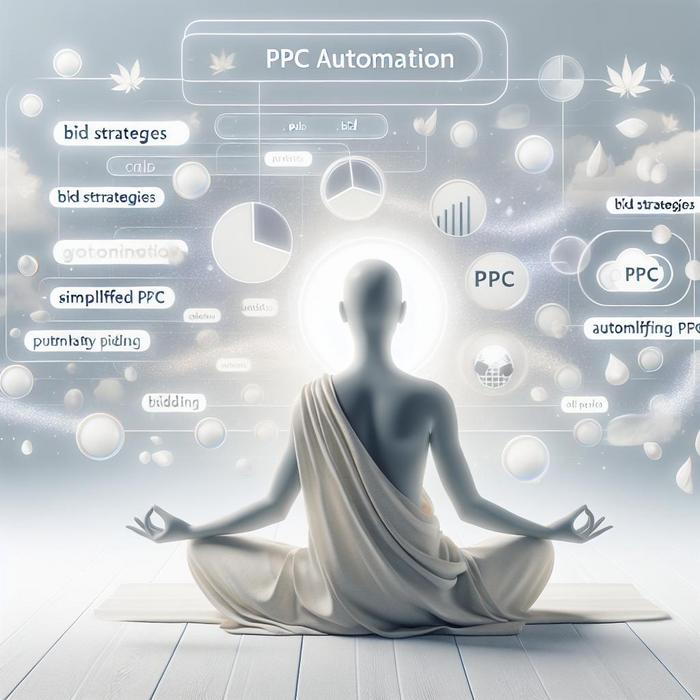Maximizing Conversion Rates Through Effective Ad Campaigns
For high-level executives fully invested in formulating strategic decisions, every initiative or campaign carries intrinsic value. Thus, it is vital to amplify the effectiveness of digital advertising campaigns. By focusing on conversion value optimization, organizations can accelerate business growth and elevate brand loyalty.
Understanding The Power of Optimization in Digital Advertising
The power to harness conversion optimization lies in your hands with the help of Google’s unique tools. It’s a highly strategic approach that allows you to maximize conversions for your Video action campaigns. This notion’s crux revolves around the use of two effective bidding strategies: Max conversion value and Target ROAS (tROAS).
On one hand, Max Conversion value aims to get as much conversion value as possible within your budget. On the other hand, tROAS automates bids to help get more conversion value or revenue at the target return on ad spend you set. These strategies enable advertisers to focus on the overall value of conversions rather than the number of conversions, thus ensuring optimal returns.
Transforming Brand Loyalty With Focused Online Advertising
Digital advertising carries immense potential to inspire brand loyalty. However, only those campaigns effectively executed and tailored to specific target audiences truly make the impact. To harness the potential of these initiatives, one must delve into multiple platforms, each with its unique offering and audience reach. To gain further insights into how brand loyalty can be inspired through marketing campaigns, click here.
“Google Ads Vs Meta Ads: A Comparative Analysis”
When it comes to digital advertising platforms, Google Ads and Meta Ads stand out as top competitors. Both offer robust campaign management tools, but their approach to conversion optimization and targeting varies.
While Google Ads allows advertisers to optimize entire campaigns, Meta Ads offers more granular control, enabling optimization at the ad set level. This may make Meta a more favorable choice for advertisers who wish to experiment with different creative elements within the same campaign.
Google Ads, on the other hand, boasts a wider reach, making it a powerful tool for businesses aiming to extend their market reach. Google’s highly sophisticated algorithms also allow for in-depth analysis and precise targeting, thereby facilitating more effective campaigns.
For an in-depth look at achieving high precision in targeted ad campaigns, kindly refer to our guidelines here.
“TikTok: A New Age Digital Advertising Platform”
TikTok, though a relatively new entrant in the digital advertising space, has already made significant waves. With its appeal to a younger demographic and unique content format, TikTok presents an exciting opportunity for advertisers to engage audiences in entirely new ways.
Leveraging creative, bite-sized content, brands can foster a deeper connection with their audience, thereby driving engagement and brand loyalty. To understand how social media marketing can drive brand loyalty, you can explore a detailed resource here.
In the rapidly evolving world of digital advertising, the key lies in understanding and leveraging the strengths of each platform. Only by doing so can businesses truly maximize the potential of their ad campaigns and drive tangible growth. To learn more about how AI is revolutionizing marketing, do refer to our insights here.
“Meta versus TikTok: Advertising for Brand Engagement”
Among the top digital platforms, Meta and TikTok both offer unique advantages. Having undergone a transformation from being primarily a social platform to delivering innovative advertising solutions, Meta allows businesses to reach a diverse audience. From creating precise target groups based on audience interests and behaviors to providing immersive advertising experiences with dynamic ads and stories, Meta’s advertising solutions help generate high levels of engagement and loyalty among target consumers.
On the contrary, TikTok’s popularity lies in its dynamic and creative content format. Brands often find success here by leveraging user-generated content, viral challenges, and in-feed ads to tap into the platform’s young and dynamic audience. The key lies in choosing the right platform based on your brand’s target demographic and content strategy. To decode the science behind crafting impeccable ad campaigns for different audience groups, click here.
“Meta versus Google for Optimal Ad Targeting”
When it comes to targeted advertising, Meta and Google both offer robust tools for businesses. Meta’s granular targeting attributes allow brands to reach precise audience groups based on interests, location, age, and other demographics. On the other hand, Google’s extensive data pool and sophisticated algorithms make it a powerhouse for targeted advertising. The digital platform analyzes search queries and user data to improve ad relevancy, thereby ensuring that businesses reach potential customers at the right time and place.
Yet, the choice between Meta and Google isn’t binary. Often, the ideal strategy might be a blend of both, leveraging each platform’s unique capabilities. To get actionable tactics for combining the strengths of multiple platforms, refer here.
“Google Ads versus TikTok: Audience Engagement and Content Strategy”
Comparing Google Ads and TikTok, these platforms offer uniquely different opportunities for engagement and content strategy. Google Ads, with its vast reach across various verticals, excels at targeting potential customers based on their search queries and browsing behavior. However, its content strategy is slightly traditional, based mainly around text, with some opportunities for image or video.
In contrast, TikTok excels in providing a platform for interactive, creative content. Whether it’s music, dance, or comedy, brands can leverage TikTok’s trending themes to create engaging and shareable content, thereby fostering higher audience engagement. For more insights on how to develop dynamic and interactive content, visit this informative resource.
“The Strategic Intersection: Managing Ads Across Platforms”
For executives accustomed to strategic decision-making, the key is not to choose one platform over another, but to leverage each platform based on its unique strengths. An advanced understanding of each platform combined with strategic execution can help businesses optimize conversion value across campaigns, ultimately driving business growth and brand loyalty.
By applying this multi-platform approach, organizations can ensure an optimal digital advertising strategy that accelerates performance and generates sustainable growth. You can dive deeper into the concept of multi-platform digital advertising here.
The world of digital advertising is continually evolving, offering new opportunities for brands to connect with their audiences. Staying ahead in this digital race requires businesses to adapt quickly and use each digital platform effectively, thereby driving higher value in every advertising endeavor. Remember, the core objective remains constant: To build lasting connections with audiences, foster brand loyalty, and drive business growth. To learn more about this concept, read through this detailed study.











